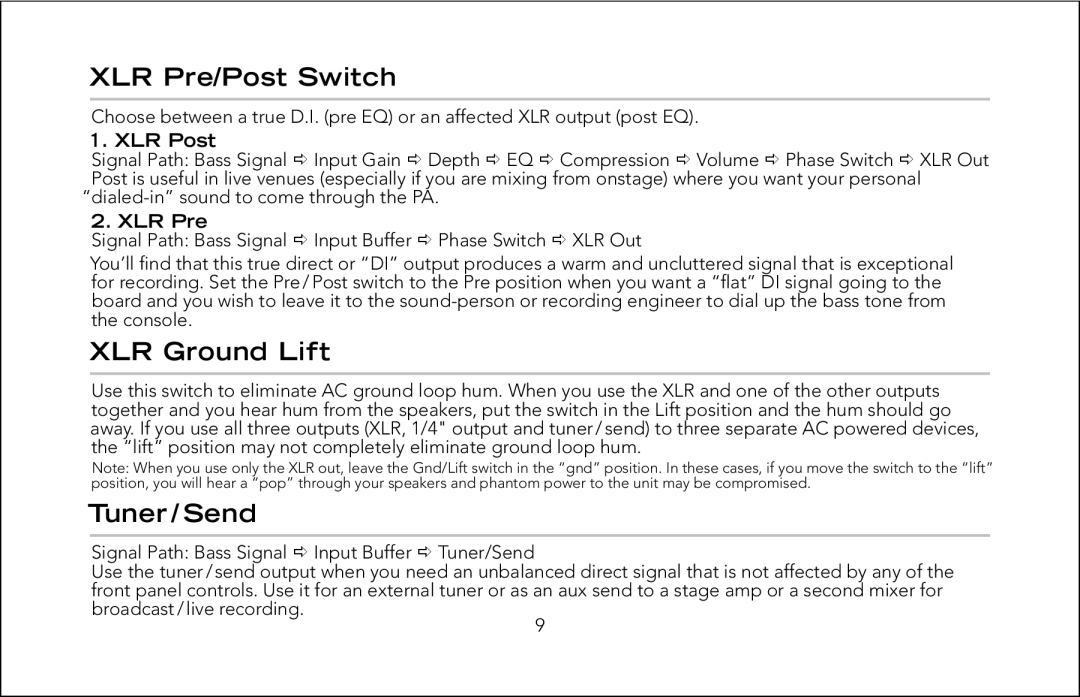
XLR Pre/Post Switch
Choose between a true D.I. (pre EQ) or an affected XLR output (post EQ).
1. XLR Post
Signal Path: Bass Signal Input Gain Depth EQ Compression Volume Phase Switch XLR Out Post is useful in live venues (especially if you are mixing from onstage) where you want your personal
2. XLR Pre
Signal Path: Bass Signal Input Buffer Phase Switch XLR Out
You’ll find that this true direct or “DI” output produces a warm and uncluttered signal that is exceptional for recording. Set the Pre / Post switch to the Pre position when you want a “flat” DI signal going to the board and you wish to leave it to the
XLR Ground Lift
Use this switch to eliminate AC ground loop hum. When you use the XLR and one of the other outputs together and you hear hum from the speakers, put the switch in the Lift position and the hum should go away. If you use all three outputs (XLR, 1/4" output and tuner / send) to three separate AC powered devices, the “lift” position may not completely eliminate ground loop hum.
Note: When you use only the XLR out, leave the Gnd/Lift switch in the “gnd” position. In these cases, if you move the switch to the “lift” position, you will hear a “pop” through your speakers and phantom power to the unit may be compromised.
Tuner / Send
Signal Path: Bass Signal Input Buffer Tuner/Send
Use the tuner / send output when you need an unbalanced direct signal that is not affected by any of the front panel controls. Use it for an external tuner or as an aux send to a stage amp or a second mixer for broadcast / live recording.
